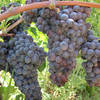Pizza any way you slice it! The best is in Naples.
We first went to Naples in 1970 and did not enjoy it. Though we visit Italy three or four times a year for business, for pleasure, and just because we love it, I refused to return to Naples.
Twenty five years passed and Michele went on a business trip to southern Italy. The first stop was Naples. She came back with nothing but praise for the city’s wonders –the setting, the people, the music, and the food. But best of all was the pizza, it was fantastic, the best she had ever tasted. I was not convinced, having eaten pizza all over Italy, how much better could Neapolitan pizza be! But Michele was enchanted with Naples and longed to return. Since I would rather be happy then be right, I would go to Naples with her. However I told her that we would only spend a short time in Naples and then go on to Rome.
All that quickly changed. Once we got to Naples I did not want to leave. The views, with the broad sweep of the Bay of Naples, Vesuvius in the distance, palm trees, baroque architecture, and the pizza are incomparable. We love big cities and walked everywhere and looked at everything, tasted everything. I was gripped with pizza frenzy and ate pizza several times a day, in restaurants, or from take out places as we walked around the city. I was unstoppable. I thought I knew a lot about pizza, but I had never eaten any like this before.
In Naples, the classic pizza is about 9 to 10 inches and has a crust that is neither too thin nor too thick. The texture of the pie is soft and chewy. Neapolitans say that the true test of a well-made pizza is that it can be folded in half and then folded again into quarters without breaking or cracking the crust. Neapolitans walk in the street eating their folded pizza. Only the edge, called the cornicione, is crisp, though it too is chewy.
Neapolitans do not put tomato sauce on their pizza. Commercial wood burning pizza ovens are so hot (over 750 degrees) that a precooked sauce would burn and overcook before the pizza is done. The typical pizza topping is nothing more than fresh, ripe cherry tomatoes or canned tomatoes from the nearby town of San Marzano. The pizzaiolo (pizza maker) crushes them with his hands to make the simple topping for the pizza.
In Naples mozzarella means mozzarella di bufala, a fresh, tasty cheese made from the milk of water buffaloes. The milk is prized for its richness and slightly tangy flavor. No one is certain how these animals came to be raised in the area south of Rome but they have been there for centuries. (Last May we visited a bufala farm where we ate bufala gelato, yogurt, ricotta and the very fresh mozzarella. There is even bufala butter! We loved it all.)
Mozzarella made from cow’s milk is called fior di latte (flower of the milk) and Neapolitans debate which is better for pizza. Fior di latte is very good but not as flavorful or expensive as bufala. Some purists feel that bufala should only be eaten on its own. In some places they will give you a choice.
A good pizza seems like a simple thing to make, but there is another ingredient that is essential – a dedicated pizzaiolo. The Neapolitan pizzaiolo is a true professional and watching him work is almost as enjoyable as eating the results. He moves swiftly and efficiently, flattening each ball of ivory-colored dough on his floury counter top and scattering slices of creamy mozzarella and crushed ripe tomatoes over the surface. After swirling a thin stream of olive oil over the pie, he deftly slides the disk onto his battered peel, jerking it once or twice to be sure that it will not stick, then tips it into the white-hot wood-fired oven. With the peel, he shuffles around the pizzas already in the oven to ensure even browning. He prepares one of two more pizzas and, sensing that the time is right, he turns and removes the pizzas from the oven and slides them on to a plate. A few leaves of sweet basil flutter to the surface and perhaps, a dribble of fragrant olive oil. From the time he touches the dough until it arrives at your table is no more than five minutes. The pizza arrives still smoking like Mount Vesuvius. This is the perfect pizza, Pizza Margarita (tomato, mozzarella and basil). The wonderful local ingredients and the dedication of the pizzaiolo makes it all come together.
There are many different toppings for pizza but my favorites are: marinara made with crushed tomatoes, garlic, olive oil, and oregano; the same with anchovies; and the queen of all pizzas, the Margarita, sometimes dressed up with prosciutto and arugula. Truly a pizza fit for the Queen for whom it is named!
Margarita was only seventeen when she married King Umberto I of Savoy (known as il re buono). Vesuvius was erupting, but when the young queen arrived, it stopped. Immediately, the people adored her. She had the common touch and would go out among the people and dress in their traditional costumes. At the king’s court, fancy French food was in style, but the Queen soon tired of it. She requested food that the common people ate. In 1889, Raffaele Esposito, the owner of the pizzeria Pietro e basta cosi (Pietro and that’s enough), was considered Naples’ best pizzaiolo and was summoned to the court. He and his wife, Pasqualina Brandi, were reluctant to serve the traditional pizza marinara with tomatoes, oregano, oil, and garlic because they felt it might be too humble for a queen. They made instead three popular pizzas: white pizza with oil, cheese, and basil; one with tiny baby fish (cecenielle); and another with tomato, mozzarella, and basil. Because the last pizza has the colors of the Italian flag, legend has it that Esposito invented it for the Queen as a patriotic gesture. Records show that forty years before the Queen tasted pizza with tomatoes, mozzarella and basil, it was eaten in Naples. But the Queen liked this pizza so much that Esposito named it in her honor though he did not invent it specifically for her. Esposito’s pizzeria still exists, but it is now called Brandi. A letter dated June 11, 1889, from the Royal House is on display declaring that his pizzas were buonissime (the best).
Next time, learn more about the origins and legends surrounding pizza, where to eat it in Naples, and what to drink with good pizza anywhere.





































i-Italy
Facebook
Google+
This work may not be reproduced, in whole or in part, without prior written permission.
Questo lavoro non può essere riprodotto, in tutto o in parte, senza permesso scritto.